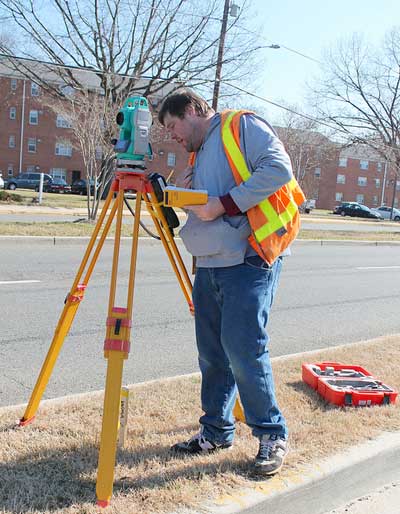If you’re buying property and having a new home built on it, then there’s a good chance that, at some point, you will be presented with a survey: a plan of the site that shows the home’s footprint and may feature elevation contours. You may also have some contact with building surveyors and quantity surveyors. If you’re having trouble sorting out all the different types of surveys and surveyors, then this post should clarify things a little bit. We’re going to talk about how to interpret the type of technical drawing know as a survey, but first, we’re going to explain the difference between land surveyors, building surveyors and quantity surveyors.
Building surveyors, quantity surveyors and land surveyors all work in the building industry, but they do very different jobs. To make things even more confusing, each type of surveyor might be referred to simply as ‘the surveyor’. How can you tell the difference? It’s all about context. Remember: to survey something means to take a good look at it, in its entirety. That’s the common theme.
Building Surveyors
Building surveyors are building inspectors and plan examiners. They’re experts in building regulations and building codes, and their job is to make sure that building designs and buildings that are under construction comply with the applicable codes and standards. Some building surveyors work for local authorities and others are independent consultants. Either way, they have the authority to judge compliance with all the acts and regulations that govern building design and construction. While your new Mimosa home is under construction, building surveyors will visit the site at various times to confirm that the house is being built to code.
Quantity Surveyors
Quantity surveyors are specialists in making construction industry cost estimates. They do material and assembly take-offs from design drawings and are able to estimate how what’s needed and how much the project is going to cost before construction begins. When you get a cost estimate for your new Mimosa home, it will be based on the work of a quantity surveyor. On more complicated projects, quantity surveyors may play a role throughout the construction process, minimising costs and performing value engineering analyses. You may never meet the quantity surveyor, but they play an important role in the process.
Land Surveyors and Land Surveys
Land surveyors use measuring devices to create scaled plans of properties, including elevation lines. Licensed surveyors generally hold university degrees in surveying, as it’s a highly technical, exacting specialty. They’re the people you see onsite with their measuring equipment on a tripod. A land survey is a plan view that will accurately show the boundaries of the property, the locations of buildings and other features, their setbacks from the edges of the property, and lines at regular intervals of elevation. A flat piece of property will not have any elevation lines – just a note of its elevation. Surveys also show the locations of under and above-ground utility lines.

Land Surveyor
Your Feature and/or Re-establishment Survey
During the design process, we’ll hire a chartered land surveyor to create a feature survey of your new house. We may order a re-establishment survey, as well; that’s a specialised survey that precisely sets the site boundaries. We’ll use the feature survey as a basis for the site design and submit it for plan review to make sure that it is in compliance with local planning policy. The local authority, in some cases, may have rules for the site layout. For example, they will probably have minimum setbacks to the property line and to adjacent properties. These will apply to your new house, garage and outbuildings. They may limit the area of pavement on the property in order to help reduce storm water runoff. There are quite a few issues that local authorities sometimes regulate. These issues can also be affected by Plans of Subdivision.
Once you have a property survey in front of you, you may wonder how to interpret it. Take a look at the two examples shown here. One is a simple, flat residential lot. On that survey, the size of the house and the distances around the property and between the house and the property lines are called out. The approximate locations of the underground utilities are shown, too. On the more complex survey, you can see dozens of elevation lines. Because it’s a US survey, the elevations are given in feet, and you can see that the house sits on top of a 100 foot high hill. The lines run at consistent heights; for example, the line labelled “400” shows the parts of the site that are 400 feet above sea level. It’s possible to draw a scaled side view (an elevation) by drawing a line across the survey and bringing down the point where each elevation line crosses it.
So, there you have it. You may run across building surveyors, quantity surveyors and land surveyors during the process of building your new Mimosa home. Your feature survey will be an important part of the design and approvals process. Check our FAQ for more information on the surveys that we commission for new homes.

